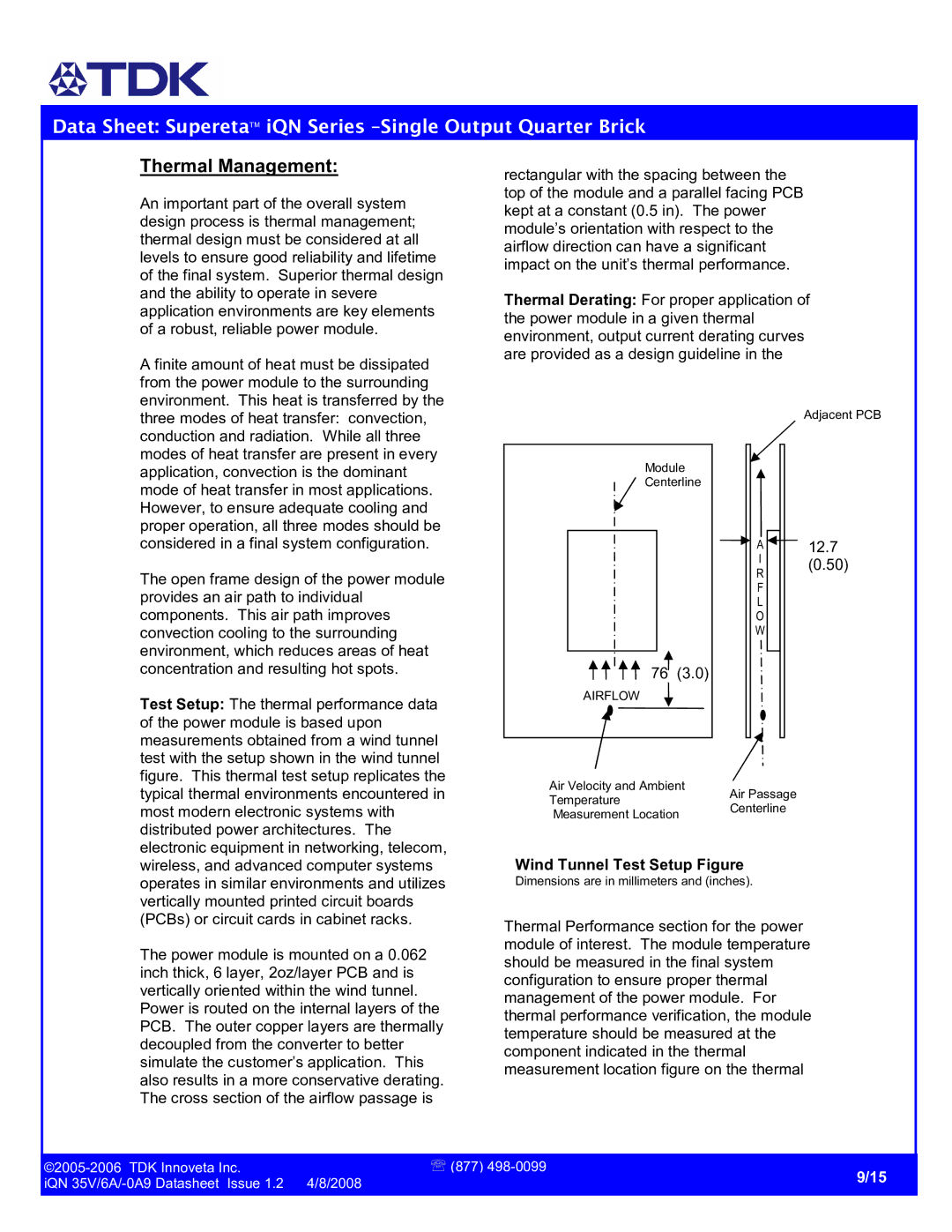iQN series specifications
The TDK iQN series represents a significant advancement in the field of magnetics, showcasing TDK's commitment to innovative technology and engineering excellence. Specifically designed for a variety of applications, including industrial, automotive, and telecommunications, the iQN series embodies the latest in magnetic core design and materials science.One of the standout features of the iQN series is its exceptional efficiency. Utilizing advanced soft magnetic materials, these components reduce energy losses, making them ideal for energy-sensitive applications. The absence of hysteresis losses ensures that the iQN series can handle high-frequency operations with minimal heat generation, thus enhancing overall system performance.
The iQN series also emphasizes versatility, catering to a wide range of inductance values and sizes. Customers benefit from the flexibility to choose the exact specifications required for their specific applications without compromising on quality. This adaptability is particularly advantageous in sectors like automotive electronics, where space and efficiency are paramount.
In terms of technology, the iQN series employs TDK’s proprietary material processing techniques, enhancing the density and performance of the magnetic cores. This technology ensures higher saturation flux density and a reduced core loss, which is critical for modern electronic devices that require high power efficiencies.
Another notable characteristic of the TDK iQN series is its superior thermal stability. The components are designed to operate effectively across a broad temperature range, making them suitable for harsh environmental conditions found in automotive and industrial applications. This resilience contributes to longer product lifespans and reduced maintenance costs for end-users.
Moreover, the iQN series is characterized by its compact design. The minimized footprint allows for easy integration into space-constrained environments, a considerable advantage for designers looking to optimize board layouts and reduce overall product dimensions.
Finally, TDK provides comprehensive support and resources for engineers working with the iQN series. This commitment to customer service, paired with extensive documentation and application notes, empowers design engineers to make well-informed decisions during the development phase.
In summary, the TDK iQN series blends efficiency, versatility, and innovative technologies to meet the demands of modern applications. With outstanding thermal stability, a compact design, and a focus on performance, it confidently stands out in the competitive landscape of magnetic components.

